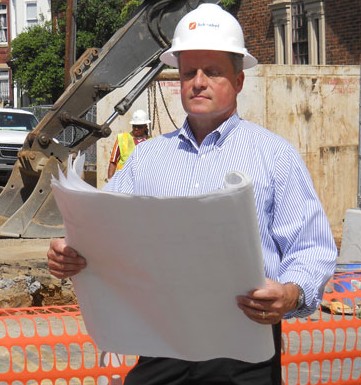Having started his own company at 14 years old, it’s no surprise Ben Dyon’s entrepreneurial drive caught the eye of Mike Panaggio, chairman of DME Holdings, a holding company that owns a series of direct-marketing and digital-media companies in Daytona, Florida. “It was one of those situations where we just clicked,” Dyon says. “I met Mike Panaggio while studying in an entrepreneurship program at Stetson University. Mike, my mentor, told me, ‘Ben, the day you graduate, I want you to come and work for me.’” Here, Dyon shares how his industrious spirit knows no bounds as DME Studios’ current CEO.
Stepping into the CEO position of DME Studios right after college graduation wasn’t such a stretch for me. By age 14, I had started my first company, Dyon Sound Co., a small, car-stereo installation and sales company providing car audio components for kids in my high school. I attempted to install stereo systems myself, but after eight hours of blaring car alarms, I decided my skills were best used elsewhere. I paid fellow students in the high school auto shop to do the installations and dedicated myself to marketing my business. After all, marketing is in my blood—my father is a former president of the Direct Marketing Association (DMA), and I grew up frequenting the exhibit halls at DMA conferences. In college, I was one of those strange kids who knew exactly what he wanted to do—I just wasn’t sure what industry I was going to do it in.
I joined DME in May 2007, learning the ropes from Mike, but was given complete autonomy. My company, DME Studios—one of 12 companies in the DME family—was launched the following summer as a video-production company providing HD video content for TV and Internet. YouTube was getting big around this time, so there was an immediate demand for engaging video content on the web. I thought it was going to be an enormous business to get into, and we did have some instant success that helped us to build a reputation, especially in the direct-marketing industry. DME Studios carved out a unique niche creating personalized video microsites, providing the ultimate product placement—the viewer’s name, photos, and other personal information dynamically placed within video. But when flip cams and SLR cameras were introduced and people began to shoot their own HD videos—when the economy started to plunge and Steve Jobs declared war on Flash (one of the necessary components for our personalized video solutions)—we realized it was time to reinvent our business model and focus on developing a game changer.
Seeking advice, I shared my concerns with Mike. He said, “Ben, you know what everyone needs? Presentations. Not Powerpoint or PDFs, but something unique that hones in on what differentiates them from their competition.” The wheels started turning, and, several months later, Present4 was born. The idea behind Present4 is to cut through the clutter and quickly introduce a business and explain who they are, what they do, why they do it better than the competition, and how to engage them. It was also developed to accompany a sales presentation as the digital leave behind, accessible by any decision maker and viewable on mobile devices. The output of the Present4 program is a two minute or less multimedia presentation that combines professional voice-over, 3-D modeling, motion graphics, and sound design.
As Present4 is a lead-generation system, we use e-mail, direct mail, social media, and even outbound calls to drive someone to a landing page to view the multimedia presentation, and we can track responses at every step. This way, we become part of the client’s team. We are so confident that this business model will be successful that we’ve completely undervalued the program, because we aren’t looking to make money off the multimedia. Our clients are coming from every industry under the sun—from a local home-improvement store to the Orlando Magic to Office Depot. If you’re a video production company, you get pigeonholed into that, so now we—with a staff of 10 and a freelance network of 45—focus on being creative geniuses.
Our company is like a jet ski more than a cruise ship—we can rapidly change direction to stay ahead of the curve. Right now, we are working on a new division focused on the home-improvement industry—an industry where a lot of our communications are applicable. As new technology evolves, we will continue to adapt and innovate.

